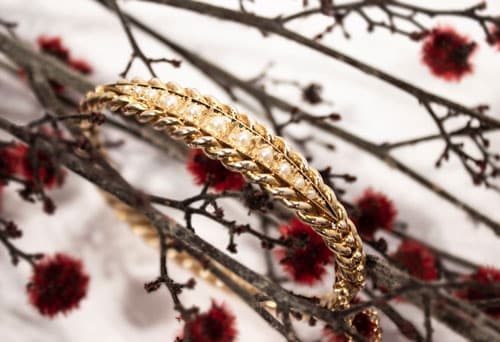
In the Georgian era opulent fashion trends were just as popular for men as they were for women. Men's fashion included breeches, sashes, cravats, hats and decorative buckles for belts and shoes. The elaborate buckles would be fashioned with all types of gemstones and materials from cut steel to diamonds set in gold. The trend of decorative buckles grew in popularity across Europe as aristocratic youths would collect the items on their Grand Tours.
During the 1720's buckles began to get larger and more elaborate in design. By the 1740's buckles came in a variety of shapes, with colour and sparkle added with the inclusion of gemstones and paste stones (Phillips, 2019). These elaborate designs reflected the taste for Rococo fashion, which included elaborate scrollwork and floral motifs. As the century progressed, Rococo scrollwork gave way to a more restrained Neoclassicism (Phillips, 2019).
These displays of opulent fashions earned these young, aristocratic travellers the pejorative nickname of 'Macaroni'. This was in reference to the Italian cuisine that they often bragged about after their grandiose tours of Europe. As described in a 1772 exert from Town and Country Magazine, “the Italians are extremely fond of a dish they call Macaroni, composed of a kind of paste; and, as they consider this as the summum bonum of all good eating, so they figuratively call everything they think elegant and uncommon Macaroni”. These extravagant accessories became synonymous with the over-the-top styles of the Macaronis, so much so, that they appeared as caricatures across various publications of the day.
Throughout this politically tumultuous time in France, the diamond studded buckles of the aristocracy became a symbol for the avarice of the elite classes. The divide of social classes and the revolt against the feudal system led to the mocking of these overtly lavish fashions of the aristocracy. One of the cries chanted by revolutionaries was "down with the aristocratic shoe buckles!", indicating the attitude shift toward the aristocracy by the oppressed classes (Hern, 2022). This social pressure climaxed in September 1789, with the gentleman of the Assembly symbolically removing their gold fobs, diamond buckles and other jewellery items and donating them to the cause of the Revolution (Phillips, 2019).
Shoe buckles eventually faded into obscurity with the invention of the shoelace and many of the precious metal examples have been remodelled to keep up with changing trends. These two Georgian era belt buckles are rare examples of this ostentatious era of fashion.

The elaborate scrollwork framing the miniatures is a fantastic example of rococo style design. The scenes are painted on porcelain and depict two young men on a fishing trip, a common past time of the era. They are dressed in Regency era garb complete with breeches, waistcoats, and hats.
The other buckle features the motif of a coiled snake, crafted from steel and set with paste stones in the eyes. The snake motif has been popular in jewellery design since ancient times, with examples found across jewellery from ancient Greece, Rome and Egypt. The snake has been a powerful symbol of rejuvenation, eternity and wisdom throughout these cultures and gained widespread popularity in the Georgian and Victorian eras.

Sources:
Phillips, Clare (2019) 'Jewels & jewellery'; Thames & Hudson V&A
Hern, Candice (2022) 'Georgian paste shoe buckles'; Georgian Paste Shoe Buckles - CandiceHern.com







